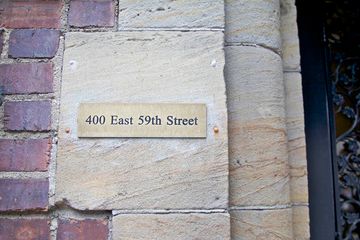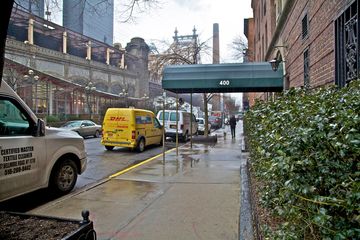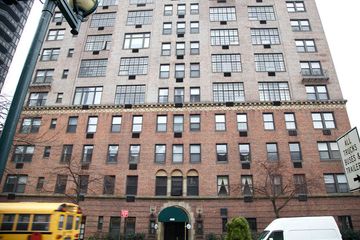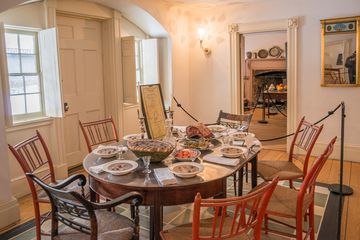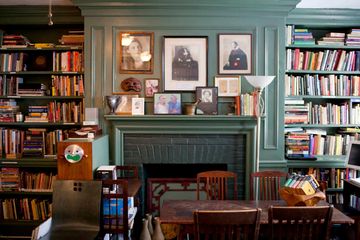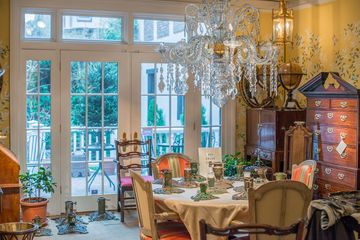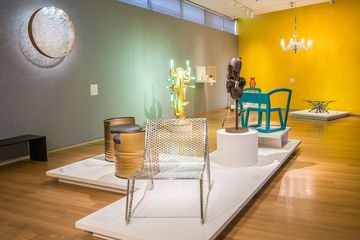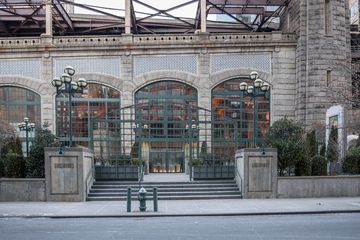There is an entrance to the Ed Koch Queensboro Bridge (also known as the 59th Street Bridge) between First and Second Avenues, making maneuvering back and forth across East 58th difficult. Notwithstanding this challenge to life and limb, nothing was going to deter me from making my way to the front door of the perfectly kept, precious red brick house with its white picket fence. From across the way, I was intrigued, and could not wait to learn the story of this nineteenth century home. Inside, I was warmly greeted by Diana and Mark Jacoby, the couple who own and run the almost seventy-seven year old antique store, Phillip Colleck. Mark and Diana met at Phillip Colleck, where they began working in 1980 on 57th Street. When Phillip Colleck, himself, passed away in 1987, the couple ran the business for six months before deciding to purchase the company. They moved into the current location in 2000, turning what had previously been a private residence into a space used partially for commercial purposes, and to my utter delight, the remainder as their home. The history of the Jacoby's pre-Civil war house is rich and fascinating. The oldest building on East 58th, it was originally the home of the brick mason who built it for his family in the 1850s. Since then, it has undergone various changes. In 1967, the owner was offered a million dollars for the building, but instead of taking the money, he had the house landmarked. When Diana and Mark renovated the front of the house - which had been painted a color they described as 'blueberry yogurt" - they had to carefully peel off the paint in an effort to preserve the layers underneath. Considering its proximity to the entrance to the bridge, I commented on how remarkably quiet it seemed indoors. Mark explained to me that the windows are the original ones and that they do not allow much sound to penetrate them. He went on to tell me that the walls are "three layers of brick thick, " then proudly boasted, "this house was solidly built. " And if I wasn't already in awe, the Jacoby's then took me out back to their charming garden where Diana said that they often entertain guests and clients. Phillip Colleck specializes in English furniture and art pieces from the eighteenth and early nineteenth century. From tables to chairs to mirrors and other fine pieces, my favorite among the many treasured items was an exquisite Spanish chandelier, still in its original design with candles to keep it lit. Although it is of course for sale, Diana announced that they are in no hurry to sell it, as it is perched over the table that they dine, and she feels it fits in perfectly. The previous tenant was a composer and professor at Julliard, and would often invite students to his home for master classes. Mark and Diana also welcome scholars into their house, allowing professors from different universities to host classes. "Our mission is largely to educate about English furniture and its place in history, " said Mark. In addition, the Jacoby's invite outside collectors to exhibit their pieces. On the day of one of my visits, during the 2014 Christmas season, I had the pleasure of meeting Harry Heissmann, who was there displaying his antique German Christmas tree stands from his own business on West 45th Street.
